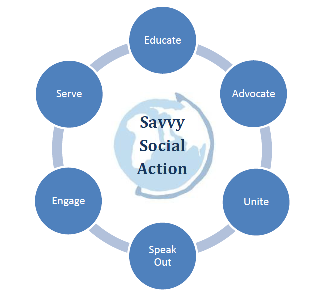Once you have chosen your topic and driving question, you should spend at least 2-3 days engaged in research with your teammates. Your group should choose a topic that interests you before you dive into your research. Picking your topic might seem overwhelming at first, but there are many ways that you can break do
Unveil the Theme:
There are assorted resources you can use to get a broad overview of the many themes which can be explored. You can start by doing some introductory reading and exploration of the larger theme before focusing too closely on any one topic.
Imitate Globally:
• Was this issue a global problem?
• In what areas of the world is this topic an apprehension or main concern?
• Are there specific regions, nations, states or communities which deal with an issue?
• Are there nation that have experienced the problem or issue differently from one another?
Compare and contrast two or more countries to explore how the issue or trouble looks for the same or different around the world.
Suggested Research ladder:
• Define terms or concepts that may not be familiar or are specific to your topic.
• Search for articles from different periods of time also from a range of sources.
• Identify movies, books, reports which refer to your issue or topic and have different members of your group read also watch them and share out.
• Identify two or more experts locally or globally who might be available to talk to you about the issue and contact them for an interview in person, over the phone or by e-mail.
• Look for bias, contradictions, and supporting arguments in the reports and sources you find!
Historically at a Glance:
• Is the topic historically a dilemma?
• When did the matter become a trouble?
• How trouble has changed over the years? Improve it, if gotten worse?
Categorize Stakeholders:
Make a list of all of the possible stakeholders related to your topic. Stakeholders are individuals with a concern in a particular issue. As different groups have different viewpoints? Discover what each group might think about the issue. How do various cultures or people view the issue? Who suffers or benefits and Why?
Narrow your scope:
Once you’ve learned about the theme in general terms, there are a few different strategies you can use to narrow your scope. Each team member can bring in an article about a current event that seems to relate to the theme. As a group, see if there is any overlap in all of the stories that everyone brings in and if there are a few that interest the team the most. Try comparing and contrasting these issues with what is happening in other countries as a way to narrow your topic.
Start with two or three topics that interest your team and then narrow it down to one by discussing the pros and cons of the different topics. Have each member of your team do some initial research and then present on their chosen topic before you chose one.
Develop a Strong Guiding Question:
Now that you’ve narrowed your topic, you should develop a guiding question for your research. A good driving question will help you focus your research but should also be provocative, open-ended, complex, and linked to the annual theme of Sustainable Communities.
An assignment without a driving question is like an essay without a thesis. Without a thesis statement, a reader might be able to pick out the main point a writer is trying to make; but with a thesis statement, the main point is unmistakable.

Driving questions should be:
• Open-ended: if your question can be answered with a "Yes" or "No" then you will need to go back to the drawing board and ensure that it does not lead to an easy answer;
• Challenging: your questions should require that you gain new information outside of what you already know or have learned in class;
• Interesting to you as the researcher so that you are motivated to keep learning;
• Realistic: your question should be something that you can answer in the amount of time that you have available;
• Complex: A broad driving question requiring multiple activities and open to many possible solutions will keep you engaged.
World Savvy’s possible topics list can be a great place to start to develop a driving question for your research. Here are some driving questions students have tackled in the past:
What is the connection between school lunches and child obesity? How does the diet in American schools compare to other nations?
What are the underlying causes of hunger and starvation in the Horn of Africa? How can average people in Minnesota make a difference on this issue?
Should GMOs be used to combat global hunger? Are they safe?
What is the environmental price of food on water? What can be done to prevent contamination of our waters?
Be intentional:
How can you have the impact on the problem that you have identified? What is realistic for you as a team to accomplish? Take your time to investigate what other organizations, groups and individuals that might be doing towards solving issues similar to yours. You may find an individual to collaborate with to put your plan into action.
Think out off the box:
Do not be constrained by what your parents, friends, celebrities and others have done in the past. Think creatively and critically about personally how you can have an impact on the topic.